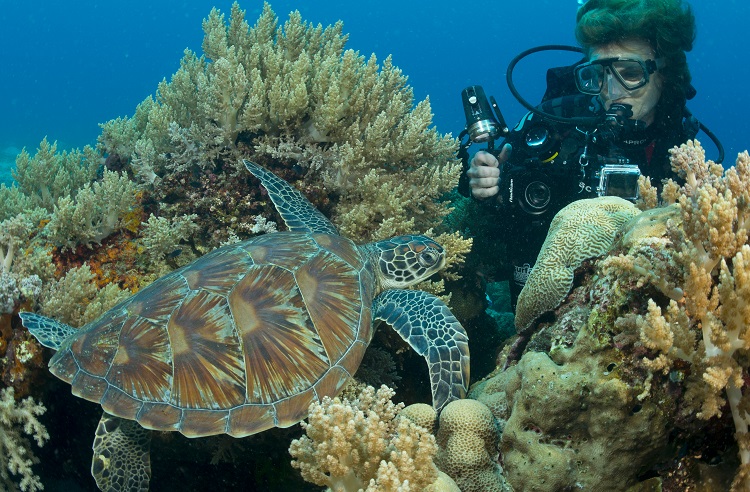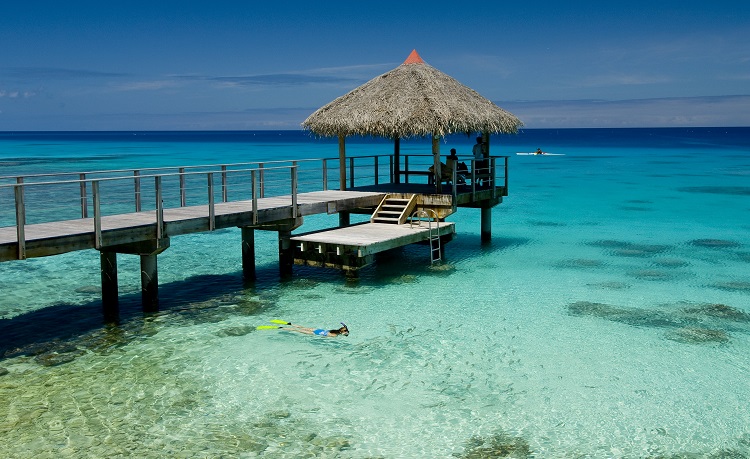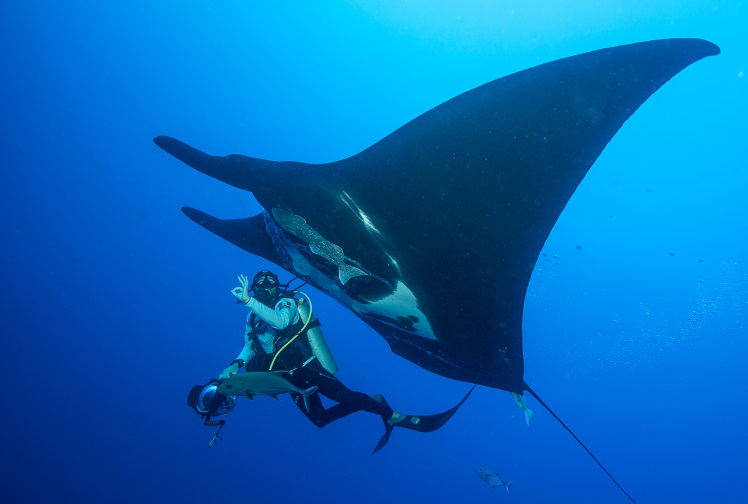Swallows Cave, Tonga
05-Jul-2011 Back to Image Gallery
During our annual `snorkelling with whales’ trips to Tonga we always visit the spectacular caves cut into the many islands of Vava'u. A real favourite is Swallows Cave as its calm sheltered water creates beautiful light beams as the sun penetrates the crystal blue water common to the islands of Tonga. Some of the sea caves like Swallows are accessible to snorkelers, others require scuba to penetrate fully. I could not capture an image like this without Cherie Deacon’s skills as a capable apnea (breath hold) diver. Cherie Deacon is very interested in this discipline and is shortly taking an apnea diving course to further improve her skills.
Photo Data: Location: Vava'u, Tonga Genre: Wide Angle Sunlight. Photo Data: Nikon D200 with Nikkor 12-24 Zoom Lens at 12mm. Seacam Silver Housing & Dome Port. Manual Exposure Mode. ISO 400. Exposure F8 at 1/250sec. Image by Kevin Deacon.
Photo Hints: The key to success in this shooting situation is manual exposure. In other words, you take total control of the cameras shutter speed and aperture setting while disregarding the cameras light meter. This is not possible on many compact cameras that only provide auto exposure. The problem with auto exposure is the cameras light meter will go crazy trying to deal with the dark environment of the inner cave and the bright shafts of light from the sun. Once you have control of your manual exposure mode in your camera you should choose a shutter speed of 1/250 second or more to ensure you freeze the light beams. You should also compose in the vertical format (some call this Portrait Format but I don’t like that term!).
Interesting Facts: Images shot with the vertical format will provide a sense of depth and make better use of the shape of caves with a vertical orientation. On the other hand, if your cave has a horizontal orientation, use the horizontal format for your composition. (Some call this Landscape Format; I don’t like that term either!) Tonga, situated well out towards the middle of the Pacific Ocean, consistently has very clear water. The islands of Vava’u in Tonga are also the winter habitat for humpback whales giving birth to their calves and mating.



